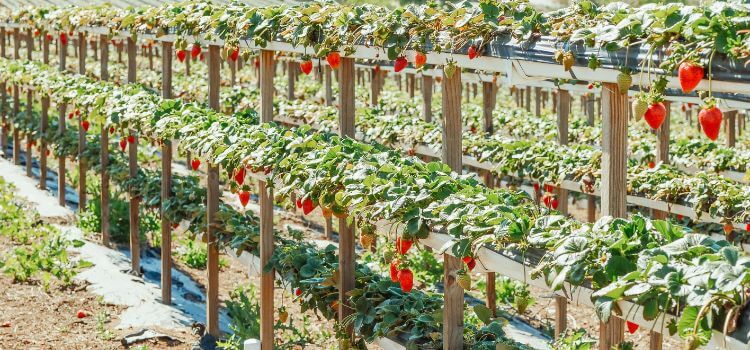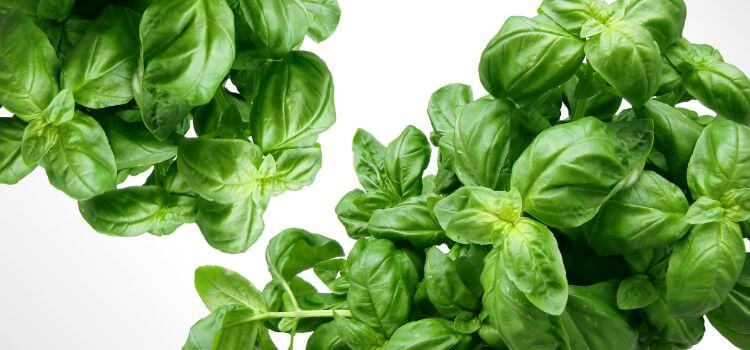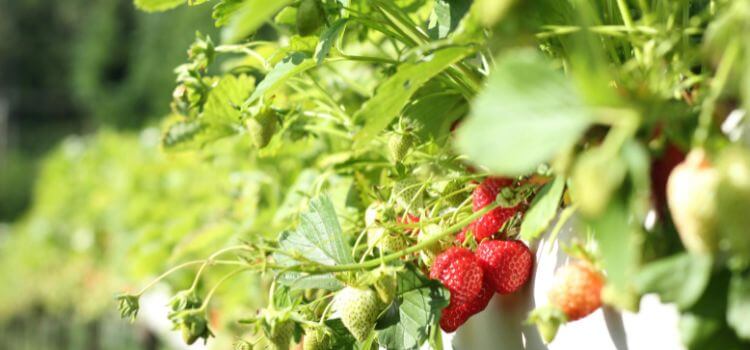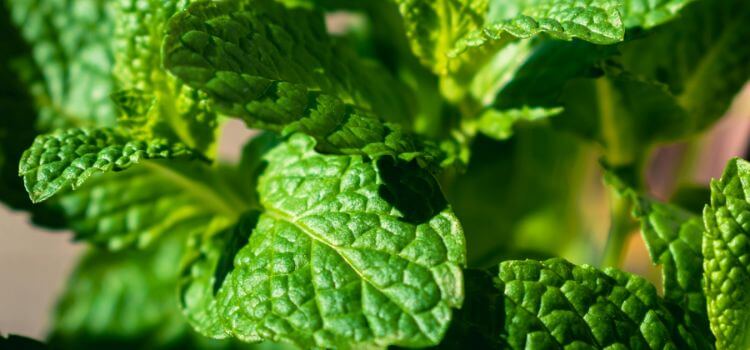As an Amazon Associate, I earn from qualifying purchases.
Best Plants For Hydroponics Can Grow At Home
Herbs like basil, mint, and parsley are the best hydroponic plants for home growing. These plants thrive in water-based systems and are easy to maintain, making them perfect for beginners.
Hydroponic gardening is a great way to grow fresh produce without soil in your own home. By using nutrient-rich water solutions, plants receive essential minerals and grow faster than in traditional soil-based methods. With the right setup and care, you can cultivate a variety of plants, from leafy greens like lettuce and kale to fruiting crops such as strawberries and tomatoes.
Embracing hydroponic gardening provides a sustainable food source and adds a touch of greenery to your living space.
Benefits Of Hydroponic Gardening
Hydroponic gardening offers numerous benefits, allowing you to grow the best plants at home without soil. Enjoy higher yields, faster growth, and year-round cultivation, all in a space-saving and sustainable way.

Increased Growth Rate
Hydroponic gardening allows plants to grow up to 25% faster than traditional soil-based gardening due to direct access to essential nutrients and oxygen. This process leads to quicker harvesting, enabling a continuous and abundant supply of fresh produce.
Water Conservation
One of the key benefits of hydroponic gardening is its remarkable water efficiency. It uses only a fraction of the water required in traditional soil farming, making it an ideal solution for areas prone to drought or water scarcity. This method also eliminates water wastage, as the water used is circulated and reused within the system.
Space Efficiency
Hydroponic gardening maximizes space utilization, making it a perfect option for urban areas or limited gardening spaces. Without soil, plants can be arranged more closely together, allowing for greater yield in a smaller area while also reducing the risk of weed infiltration and nutrient depletion.
Different Types of Hydroponics Plants
When it comes to hydroponic gardening, choosing the right plants is essential for a successful and productive harvest. With the correct selection, you can enjoy the benefits of growing fresh and healthy produce right in your own home. Whether you’re a seasoned hydroponic gardener or just getting started, it’s important to consider which plants will thrive in a hydroponic system. Following are some of the hydroponic plants that you can grow at home:
Leafy Greens
Leafy greens are some of the easiest and most popular plants to grow in a hydroponic system. Varieties such as lettuce, spinach, kale, and Swiss chard thrive in nutrient-rich water without the need for soil. Their shallow root systems make them ideal for hydroponic setups. These greens are not only delicious and nutritious but also grow quickly, allowing for a continuous harvest.
Herbs
Growing herbs in a hydroponic garden is a convenient way to have fresh, flavorful additions to your culinary creations at your fingertips. Herbs such as basil, mint, cilantro, and parsley flourish in a hydroponic environment, providing a regular supply of aromatic and savoury foliage.
With their compact size and rapid growth, herbs are a perfect choice for hydroponic gardening, adding both taste and aesthetic appeal to your indoor garden.
Tomatoes
Tomatoes are a popular choice for hydroponic gardeners due to their bountiful yields and delicious flavour. With proper care, tomatoes can thrive in a hydroponic system, producing juicy, vine-ripened fruits throughout the growing season.
By providing the right nutrients and support, hydroponic gardeners can enjoy a steady supply of fresh, home-grown tomatoes without the challenges of traditional soil-based cultivation.
Top 5 Plants For Hydroponic Home Gardening
The five best plants for hydroponics are lettuce, basil, spinach, bell peppers, and cucumbers. These plants thrive in water-based growing environments.
Basil
Basil thrives in hydroponic systems, offering the perfect blend of utility and fragrance. This culinary favorite grows well in water-based environments, providing a lush, green addition to any indoor garden.

In the realm of hydroponic basil cultivation, certain conditions are non-negotiable to ensure lush, healthy growth:
- Lighting: Basil demands abundant light. Ideally, 14 to 16 hours of bright, artificial, or natural light fuels the herb’s photosynthesis process.
- Temperature: Warmth is a friend to basil, with a sweet spot ranging from 65-75°F (18-24°C), which can be maintained with ease in most indoor hydroponic setups.
PH Levels: The root environment for hydroponic basil should maintain a pH between 5.5 and 6.5, critical for the optimal uptake of nutrients.
Lettuce
Lettuce thrives in hydroponic systems, offering a quick harvest cycle for enthusiasts. Its minimal root system and adaptability make it a top choice for water-based cultivation.

Growing lettuce in hydroponic systems comes with its specific needs. Let’s look at the crucial pointers for ensuring your greens grow up lush and crisp:
- Lighting: Lettuce requires a moderate level of light. Fluorescent or LED grow lights are perfect as they don’t emit much heat, which could harm the plants.
- Temperature: Aim to maintain a cool temperature, ideally between 60-70 degrees Fahrenheit. Lettuce enjoys cooler climates and is sensitive to high heat.
- Nutrient Solution: Provide a balanced nutrient mix rich in nitrogen to promote leaf growth. The pH of the solution should stay between 5.5 and 6.5 for optimal nutrient uptake.
Harvesting Time: Harvest your lettuce when it appears full and the leaves have formed. This typically takes about 30 days from seeding.
Strawberries
Strawberries emerge as top contenders in hydroponic gardens, thriving in water-based environments. Their rapid growth and succulent fruit make them an ultimate pick for efficient, soilless cultivation.
Hydroponic gardening brings the delight of growing fruits and vegetables year-round directly into your home. Among the various tasty treats you can nurture, strawberries stand out for their sweet rewards and the joy they bring to both novice and seasoned gardeners alike.

Unlike traditional soil cultivation, hydroponics affords precise control over nutrients and other growth factors.
- Lighting Needs: These juicy fruits require 8 to 12 hours of light daily to flourish. Consider installing full-spectrum LED grow lights that mimic natural sunlight.
- Temperature and Humidity: Keep the environment at 65-75°F with a humidity level of around 70-80%.
- PH Levels: Maintain water pH between 5.5 and 6.2 for optimal nutrient uptake.
- Nutrient Solution: A well-balanced, complete hydroponic nutrient solution is vital for healthy strawberry plants.
Mint
Mint thrives in hydroponic systems, offering gardeners a refreshing, aromatic herb that’s both versatile and easy to grow. Its vigorous growth and less demand for light make mint one of the top plants for water-based cultivation.

Ensuring mint achieves its full potential requires attention to its hydroponic conditions:
- Light Exposure: Mint needs a substantial amount of light, preferably around 14-16 hours daily, to maintain healthy growth.
- Nutrient Solutions: A balanced mix of essential nutrients in the water is key to lush, flavorful mint leaves.
- Water Temperature: Keep water temperatures between 65 and 70 degrees Fahrenheit to promote optimal growth without stressing the plant.
- PH Levels: Mint prefers a slightly acidic to neutral pH range, from 5.5 to 7.0, for thriving foliage.
Pepper
Hydroponic pepper refers to pepper plants grown using the hydroponic method. This technique bypasses soil and uses nutrient-rich water solutions instead.

Crafting the perfect environment for hydroponic peppers ensures their vibrant growth:
- Lighting: Peppers need plenty of light, with LED or HID lamps offering a spectrum conducive to their development.
- Temperature control: A consistent temperature, typically between 65-80°F, is crucial for fruit production.
- Nutrient solution pH: Maintaining a pH range of 5.5 to 6.5 allows for optimal nutrient uptake.
Setting Up Your Hydroponic System At Home
Home hydroponics is an innovative way to grow plants without using soil. This method offers several advantages, including faster growth rates, higher yields, and the ability to grow plants all year round.
If you’re interested in setting up your hydroponic system at home, this guide will walk you through the essential steps. From selecting the right container to providing the ideal growing medium, nutrient solution, and lighting, you’ll have all the information you need to get started on your hydroponic journey.
Selecting A Container
The first step in setting up your hydroponic system is selecting a suitable container. This should be a watertight container that can hold the necessary water and nutrient solution without leaking. Popular options for hydroponic containers include plastic buckets, reservoirs, or specially designed hydroponic systems.
When choosing the container, consider the size of your plants and the available space in your home. A larger container may be needed for larger plants and vice versa.
Choosing The Right-Growing Medium
Unlike traditional soil-based gardening, hydroponic systems require an alternative growing medium to support plant growth. The growing medium serves as a substitute for soil, anchoring the roots and retaining moisture and nutrients.
Common choices for hydroponic growing mediums include perlite, vermiculite, coconut coir, and Rockwool. Each medium has its characteristics and benefits, so it’s important to choose the one that best suits your plants and system.
Nutrient Solution
The nutrient solution is an essential component of a hydroponic system as it provides the necessary minerals and nutrients for plant growth. This solution typically consists of a mix of water and specially formulated hydroponic nutrients, available in various ratios to cater to different plant types and growth stages.
It’s crucial to ensure that your nutrient solution is properly balanced and provides all the necessary elements for healthy plant growth. Regular monitoring and adjustment of the nutrient solution’s pH is also essential to avoid nutrient deficiencies or imbalances.
Lighting
Proper lighting is a key element for successful hydroponic gardening, as it replaces natural sunlight. Plants need adequate light to carry out photosynthesis and grow effectively. LED grow lights are a popular choice for indoor hydroponic systems due to their energy efficiency and ability to provide the required spectrum for plant growth.
When selecting grow lights, consider the light intensity, colour temperature, and duration. Different plant species have varying light requirements, so it’s important to provide the right amount and quality of light for optimal growth.
Maintenance And Care For Hydroponic Plants
Maintenance and care for hydroponic plants are essential for successful home growth. Discover the best plants for hydroponics and easy-to-follow tips to keep them thriving.
Maintenance and care are crucial for ensuring the successful growth of hydroponic plants. Since there is no soil, monitoring pH levels, checking nutrient levels, and pruning and harvesting play vital roles in the health and productivity of your hydroponic garden.
Monitoring Ph Levels
pH levels need to be closely monitored in a hydroponic system as they can directly impact the plants’ ability to absorb nutrients. Use a pH meter to test the water regularly and maintain levels between 5.5 and 6.5 for most plants. Adjust the pH by adding small amounts of pH Up or Down solutions, as needed.
Checking Nutrient Levels
Check the nutrient levels in the water regularly to ensure that the plants are receiving the necessary minerals for healthy growth. This can be done using an electrical conductivity (EC) meter or a total dissolved solids (TDS) meter. Adjust the nutrient solution according to the requirements of the specific plants being grown.
Pruning And Harvesting
Keep a close eye on the plants for any signs of disease, pests, or overgrowth. Regularly prune the plants to remove dead or damaged leaves and encourage new growth. Harvest the mature plants at the right times to ensure a continuous supply of fresh produce.
Regular maintenance and care for your hydroponic plants are essential to ensure optimal growth and yield. By monitoring pH and nutrient levels and maintaining proper pruning and harvesting practices, you can enjoy a thriving and abundant indoor garden.
Frequently Asked Questions
Popular house plants suitable for hydroponics include herbs like basil and mint, leafy greens such as lettuce and spinach, and flowering plants like orchids and African violets.
Popular plants for hydroponic systems include lettuce, herbs, tomatoes, cucumbers, and peppers. These plants thrive in nutrient-rich water, making them ideal for hydroponic cultivation.
Cannabis is the most profitable plant to grow hydroponically. It offers high market demand and the potential for significant returns.
Some plants, such as root vegetables like potatoes and carrots, are difficult to grow hydroponically because they require soil.
Conclusion
The joy of growing hydroponic plants at home with these top choices. Elevate your indoor gardening experience effortlessly. Start creating your lush oasis now. Explore the endless possibilities of hydroponics and enjoy the beauty they bring into your living space.

